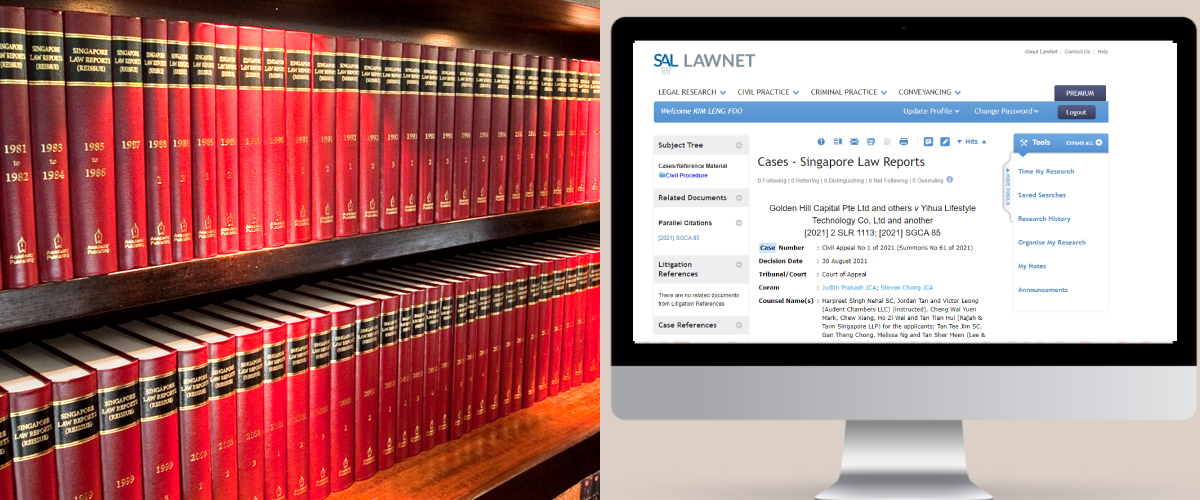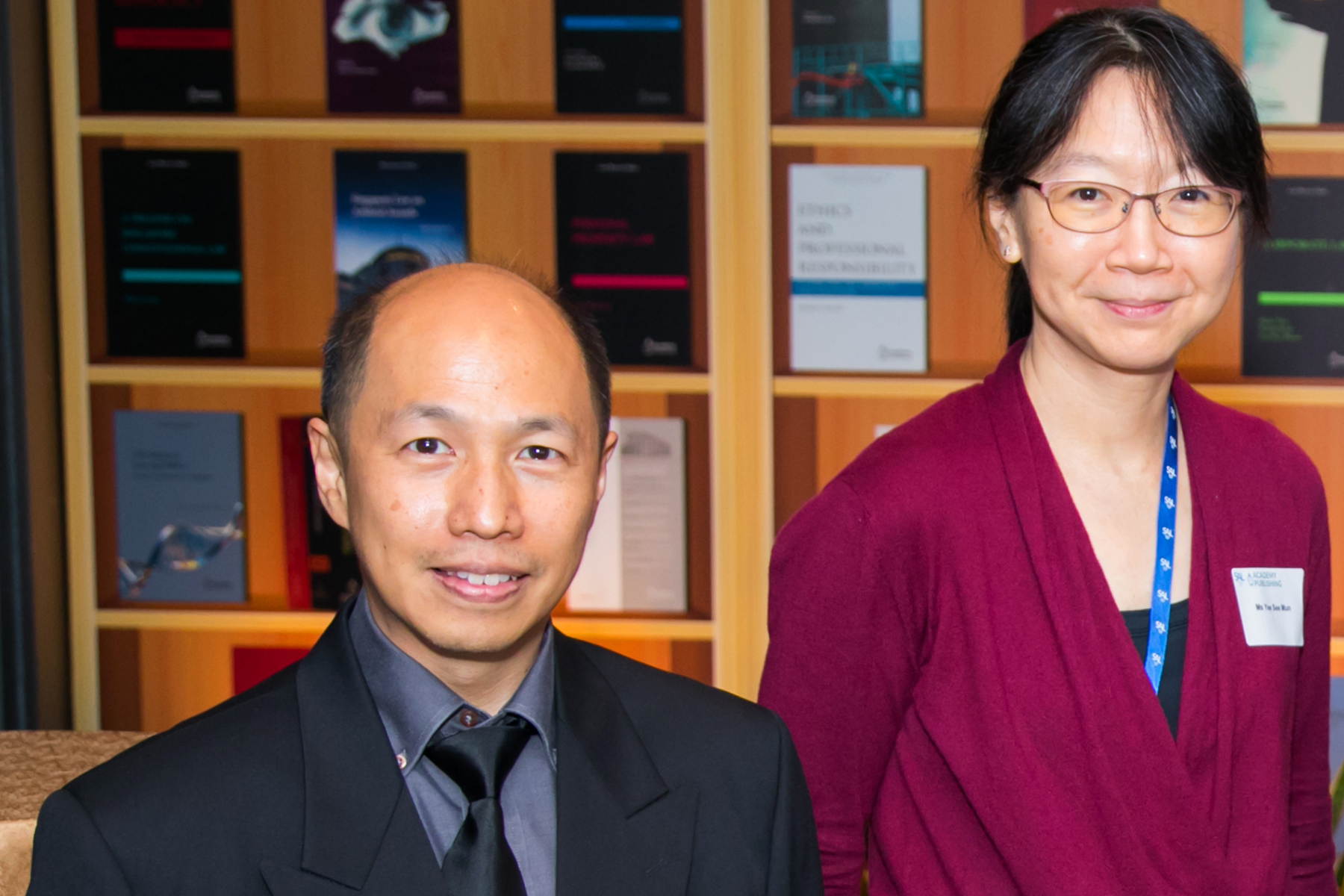A LOOK AT LAW REPORTING
Who decides what cases make it to the Singapore Law Reports? What’s the difference between an unreported judgment and a reported one?

BY ASHUTOSH RAVIKRISHNAN
For some lawyers, few things are as prestigious as having a case they fought reported in the Singapore Law Reports (SLR) published by SAL. These reports were traditionally bound in thick leather tomes and released annually, but they are now available solely on LawNet. Going digital has added great value to users as they can, at a glance, see all the cases and legislation that appear in the judgment and access them via hyperlinks if they are available on LawNet.
Even though both unreported and reported judgments are published on LawNet, it is clear that the profession still places great importance on having their cases in the “reported” version. “In the early days of the original SLR [with Butterworths in the 1990s], we would occasionally get requests from lawyers who have appeared in a particular case … they would write in to ask why their case wasn't reported,” says Mr Andrew Yeoh, Deputy Director of Legal Publishing and Knowledge at SAL.
The task of deeming which judgments are worth reporting currently falls to a selection panel convened as a sub-committee of the Council of Law Reporting. This panel comprises nine members of the legal profession (including senior legal officers and academics) with deep expertise in various practice areas.
Having a panel apply the Selection Criteria for SLR and decide which judgments are worth publishing ensures that consistent principles are applied, instead of arbitrary ones based on the whims of any one person. After all, a case reported in the SLR signals its importance for Singapore’s jurisprudence, says Andrew. “If a judgment is deemed to be worth reporting, it’s possibly because it makes a statement on a new area of the law or a re-statement on an existing area of the law.”
Once the panel gives the green light for a case to be reported, the Justices’ Law Clerk (JLC) who assisted the presiding judge in that case prepares its headnote. These extremely detailed summaries of the case contain catchwords, a summary of the facts and holdings, as well as a list of cases and legislation that were referred to in the judgment.
“This is a very important part of a reported case,” shares Ms Yee See Mun, the Chief Editor of SAL’s Law Reporting team. “It’s actually what gives it value and distinguishes it from unreported judgments. If someone doesn’t want to read through the whole case, reading the headnote can still give them quite a good idea of what the case is about.”
This commitment to knowledge management extends to unreported judgments (URJs) as well. In the 2020/2021 financial year, 20,347 pages of Supreme Court cases and 13,964 pages of State Courts cases were published as unreported judgments on LawNet. Here, too, the team adds value: for appeals that were concluded without written grounds of decision rendered, an editorial note indicating the appeal outcome (as drafted by the JLC and approved by the appellate court) would be added to the associated High Court decision. “This is one way we keep LawNet users informed if these still make for good case law or not, based on whether the appeal was allowed or dismissed,” explains See Mun.

Andrew and See Mun, key members of SAL's Law Reporting team
COMPREHENSIVE COMPREHENSION
The Singapore Law Reports first went online in 1998. In those early years, SLR was published by Butterworths Asia and the files were then sent over to the LawNet team for uploading. The SAL Publishing team worked on publishing the print copies fortnightly from 2003. The files were then shared with the LawNet team who had to re-purpose the content for online. Over the last 14 years, improvements have been made to the entire publishing process so that there would be only one team publishing SLR both for print and online by dint of a single-source publishing workflow.
“The time it takes to publish a URJ can depend on the length of the judgments,” says Andrew. A High Court judgment ranges from 30 to 150 pages (sometimes even more than that) and once the document is received, a member of Andrew’s team starts formatting the report, extracting references and converting the report to XML.
“One of the remaining challenges we have with legal publishing is the extraction of legislation references. This is a manual process as the mode of citing legislation may differ from one judge to another. For example, one may write ‘Section 1 of the Legal Profession Act’, while another may write it as Legal Profession Act, s 1’. Sometimes ‘section’ is spelt in full, sometimes it's spelt as ‘s’. So until we can create a programme to properly extract that kind of information (sort and alphabetise it), it will still be a manual process of checking to ensure that these references are consistently and accurately extracted. As it stands, the Supreme Court URJs go up on LawNet within five days of the courts sending us these judgments.”
Cases reported in the Singapore Law Reports have a new use: since 1 June 2021, they have been referred to in LawNet’s pleadings database, which has given hundreds of lawyers access to quality pleadings, handpicked by judges. Learn more here.
“I underwent a bit of a “culture shock” when I first started working on the SLR current series, as we had to publish and deliver to the subscribers one SLR hardcopy part every fortnight (two parts every month). It was quite a substantial change of pace as compared to doing mostly editing in the backend for the SLR reissue series, plus there was also more interaction with external parties (e.g. JLCs, PSes, printer). I’m happy to say I survived the initial jolts and have since helped navigate SLR over the last 12 years through various changes in the reporting and publishing processes.”
Ms Yee See Mun, the Chief Editor of SAL’s Law Reporting team






